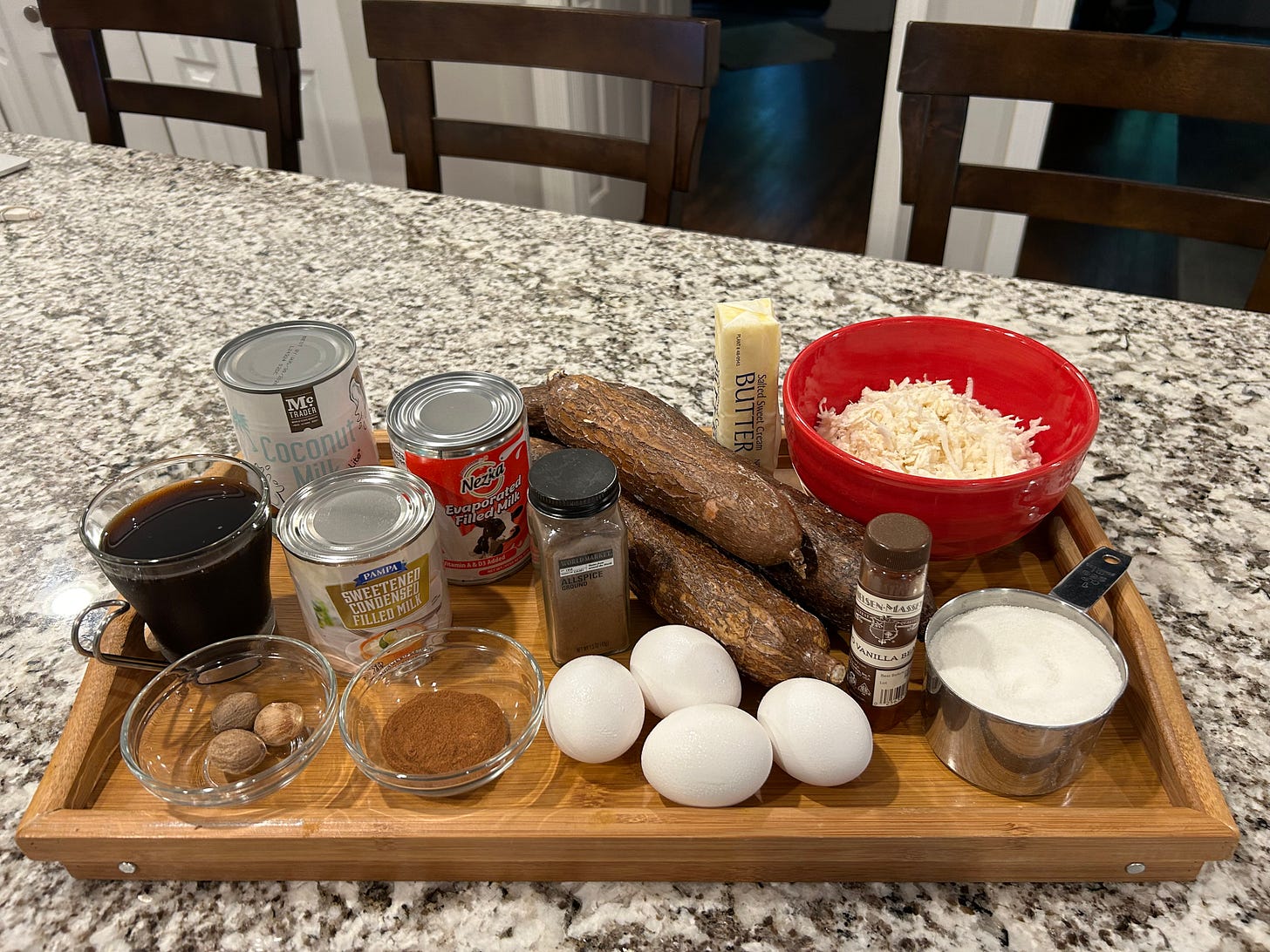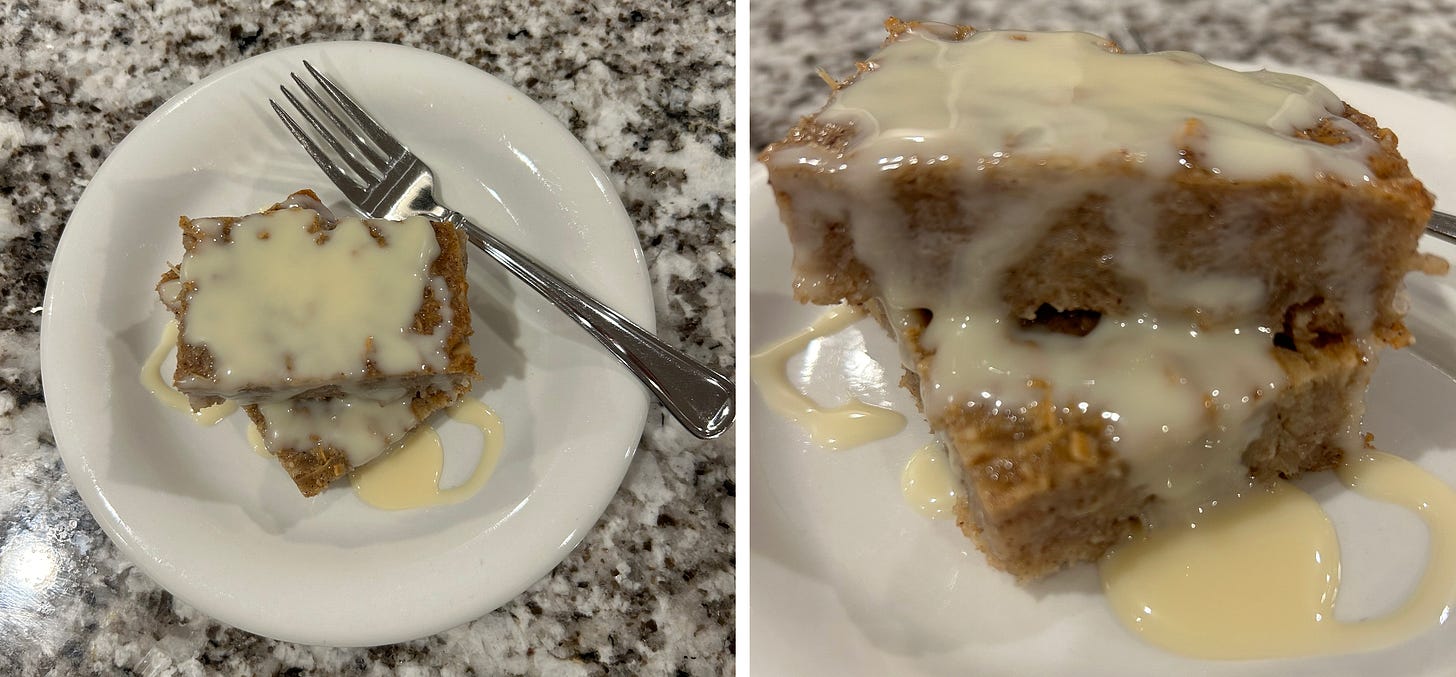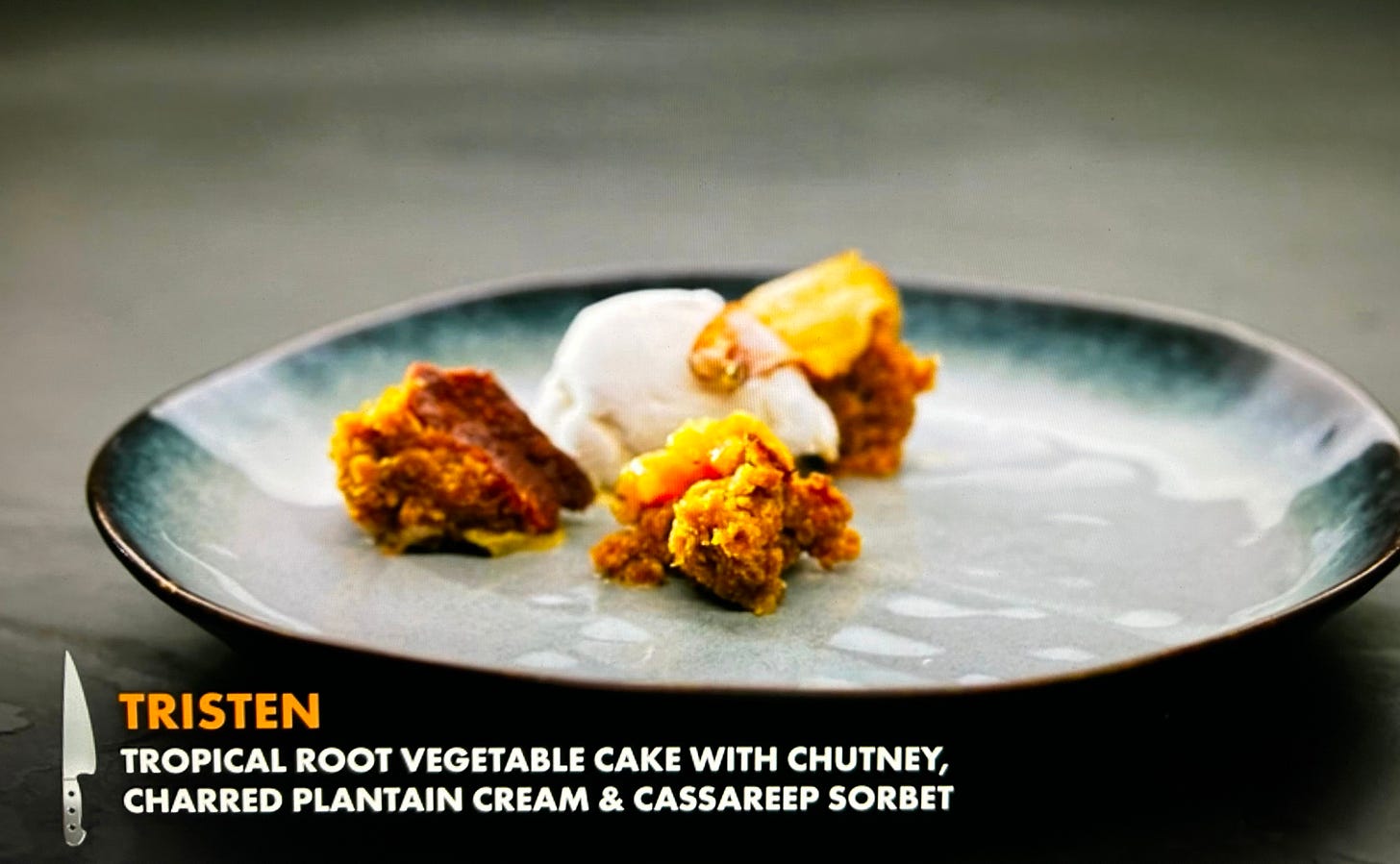"Write your sad times in sand. Write your good times in stone."
- George Bernard Shaw
I am trying to play catch up with my cooking journey because by now I should be on K or maybe even L,. Damn that cassareep! To be honest, cassava (also known as yuca) is actually a really easy vegetable to cook with and the more I thought about it, the more I realized what an interesting ingredient it is. It can be cooked in so many different ways and distilled down into different forms for different purposes - the starch can be extracted to make tapioca which can be made into a gluten-free flour, it can be used to thicken soups and sauces, and can be cooked down into tapioca pearls needed for the eponymous pudding and the pearls found in bubble tea. How many other vegetables are that versatile? I can’t think of one that is key to such a wide variety of recipes, both savory and sweet.
When I started thinking about H, I immediately thought I would head to Haiti. One of the reasons I wanted to do this was to expose myself to different cuisines and recipes that were out of my range of knowledge, and sometimes even out of my comfort zone. I’m also trying to make sure I vary the continents, the cultures, and the courses. I even have a spreadsheet that keeps track of all of these details! So, when I realized that I still haven’t made a dessert, I figured it was time.
I started writing this post right after I hit send on my Guyana post, which was right after I spent an hour looking for the pictures of the cooking class I took in Costa Rica that I mentioned in that post (see below for pics). That was where I was first introduced to cassava. My original plan was to make the Haitian dessert, blan manje (sometimes called blanc manger). That one seemed easy enough, actually maybe too easy, so I spent some time looking at other Haitian and even some Hungarian dessert recipes.
So, this is my longwinded way of saying that today instead of heading to Haiti to make blan manje or to Hungary to make Hungarian Gerbeaud cake (Zserbó szelet), which looked very complicated but very delicious, I’ve decided to jump west from Guyana over to Honduras to make yuca (cassava) cake.
In fact, we’re also jumping back into similar, yet very different territory to the because this recipe calls for not only cassava (not cassareep, though), but also some of the same warm spices used in last post’s Guyanese pepperpot. I thought this might be an interesting juxtaposition of same ingredients and very different dishes.

This is a pretty easy cake to make that can be mixed up in about 15 minutes, but takes a little longer to cook because the yuca is on the dense side, and you need to let it cool for a bit after it bakes. Don’t eat it raw, though; it can be poisonous.
Honduran Yuca Cake with Sweet Milk Sauce
1 cup granulated sugar
1 teaspoon ground cinnamon
1/2 teaspoon ground allspice
1/4 teaspoon ground nutmeg
1/4 teaspoon salt
1 1/2 pound yuca, peeled and grated (about 4 cups)
4 large eggs, slightly beaten
1 can (13.5 ounces) coconut milk
2/3 cup (5 fluid-ounce can) evaporated milk
1/2 cup dark blend coffee or espresso, cooled
1/2 teaspoon vanilla extract
2 tablespoons butter, melted
1 can (14 ounces) sweetened condensed milk
Preheat oven to 350º F.
Grease 13 x 9-inch baking dish.
Combine the sugar, cinnamon, allspice, nutmeg and salt in small bowl.
Combine yuca, eggs, coconut milk, evaporated milk, coffee, butter and vanilla extract in a separate bowl and mix until well blended.
Add the sugar mixture to the yuca mixture and stir until well blended.
Pour batter into the baking dish.
Bake for an initial 40 minutes and then check with a toothpick. You might have to keep adding time in 15 minute increments until the toothpick comes out clean. I wound up leaving it in for a total of 90 minutes.
Cool completely in dish on wire rack.
To serve, pour sweetened condensed milk over entire cake to glaze or top each piece with desired amount of condensed milk. You can also serve it on the side for dipping.
I was pretty happy with how this came out. It’s not overly sweet, unless you douse it with the sweetened condensed milk, which can be cloying if you use too much. It actually reminded me a little bit of the Jewish Apple Cake my aunt makes for special occasions and has been a favorite for a long time. The spices are similar, and the yuca is similar in texture to apples.
The yuca on the dense side, but I think that’s from the way it cooks down. There’s no flour - I feel halfway safe to say this is a gluten-free recipe - so the as the yuca cook, they absorb the wet ingredients and almost compress into solid, yet moist layers. The spices are front and center and it smells spicy and warm. It had a tiny resemblance to a thick bread pudding, which led me to think of French toast. You could slice these after they cool and then quickly sauté them to brown them around the edges and serve them as a fancy breakfast side. Very versatile, and very tasty.
Cassava is a vegetable that I will continue to explore and try different versions cooked different ways. I suspect the easiest way to get started is to approach it like a potato.

I also have to take a minute to call out the happy coincidence of the timing of my yuca cake post and finale of the latest Top Chef season which aired last night. The winner, Chef Tristen Epps’s final dish was a version of a root vegetable cake (cassava is a root vegetable) that was accompanied by a cassareep sorbet. Now, how that flavor - which if you read my last post I described as extremely strong and distinctive - was incorporated into a sorbet is beyond me. The judges loved it and loved just about every single dish he cooked throughout the entire competition.
Now, while my yuca cake was certainly no match for his dessert, I am going to take this timing as a sign to keep going, even when things these days can feel bleak and full of sadness.
Thanks for stopping by. This installment of “Let’s Eat” is free, so feel free to share.
Enjoying kimchantment? You can also share the full site with others.
Click here for more “Let’s Eat” posts.
Join kimchantment on Instagram.
Visit the full kimchantment site.
The main recipes I used included Boondocking Recipes and The Recipe Island.
© 2025 Kim Selby & Storm Your Brain, LLC. All rights reserved. All photography © Kim Selby unless otherwise credited.








